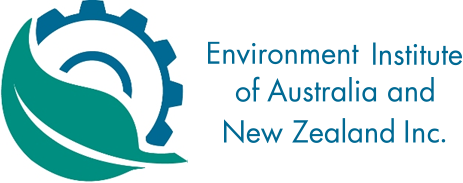-
Member Login
- Home
- About
- Institute Groups
- Membership
- Events
- News & Publications
- Institute Programs
- Resources
- Jobs Board
- Contact Us
- Site Info
Barry Carbon AM HFEIANZ
Barry Carbon AM HFEIANZ
 |
Barry Carbon has a degree in science ( biochemistry and physiology), a conversion degree to agriculture, a masters degree in agriculture and extra units after graduation in mathematics, all from the University of Western Australia (UWA). |
1964 -1979
Barry continued his university studies at UWA throughout the early years of his career at CSIRO. His own CSIRO research started in soil-plant water relations. He was one of the first to publish on water relations of Australian forests; water stress, water use, root distribution, leaf area. He was one of the first in the world to publish successful process-based simulation models of the hydrologic cycle for forests and pastures. He was promoted to senior principal research scientist, and was program leader for a group researching land resource management. His group took a multi-disciplinary approach to topics like wetland management, water allocation and coastal development.
1980-85
Barry was in charge of environmental affairs for Alcoa of Australia, including mining rehabilitation, pollution control, and farm management. In those times Alcoa invented modern mining rehabilitation, and was subsequently recognised by the UN as the only mining company awarded membership of the global 500 for environmental achievement. He was Chairman of WA Chamber of Mines Environment Committee including overseeing Chamber’s input to review of EP Act. In that role Barry was in discussion with others across Australia about forming an organisation that would promote interchange between environmental professionals. An issue of the time was that although industry people held environment management meetings for their professionals, non-industry people were specifically excluded.
1985-93
Chairman and Chief Executive Officer of the WA Environmental Protection Authority, Barry led the team that introduced the Environmental Protection Act 1986 which was recognised, including by the International Association of Impact Assessment, as the then best in the world. This was a time of great change for environmental protection in WA. Industry licencing changed from health oriented to the wider environment, which was the enabler to clean up Kwinana and Kalgoorlie industrial areas, marine areas like Cockburn Sound, Albany Harbour and Peel Inlet, and to cease wide scale discharge of sewage into rivers. Marinas were constructed on the seaside taking otherwise unbearable boating pressure from the Swan River during and after the America’s Cup. Quantitative risk assessment was introduced and applied with new standards for cumulative impact, setting the benchmark for Australia. The previous Systems studies for conservation of selected representative areas were implemented.
In the late 80s, Barry, with the heads of state environment protection agencies, encouraged non-government to have an association for environment professionals across industry, government, academia and other. What is now EIANZ came from a meeting of like-minded people who met at Griffith University in 1986 with the heads of government agencies specifically working to have non-aligned persons as leaders so that professional involvement was the key determinant for inclusion.
1994-98
Barry was CEO of the Commonwealth EPA during the time of first application of Basel Convention, leadership in international efforts to curb ozone depleting substances, introduction with industry assistance of national lead-in-petrol standards, re-assessment of all previous Commonwealth approvals of coal industry in Australia, winning the IAIA global award for joint government-industry guidelines for mining and environment developed in Australia and implemented in Southern Africa.
Concurrently Supervising Scientist for the Alligator River Regions overseeing uranium industry environment management, he also used the considerable in-house aquatic science expertise of that agency to do a clean-up of metal contaminated waters in Tasmania.
He oversaw the introduction of the National Environment Protection Council and legislation, was inaugural chair of the National Environment Protection Council Standing Committee and introduced the first set of National Measures.
1998-2002
During this time, Barry was the inaugural Director General of Queensland EPA and Parks and Wildlife. He oversaw the introduction of Queensland EPA, major planning and protection of water bodies and coasts to manage canal developments, coastal erosion and undertook first prosecutions for environmental damage, including vessel impacts on Great Barrier Reef (GBR day-to-day management is Queensland responsibility).
2002-2006
As CEO of New Zealand Ministry for Environment and Secretary for Environment, he introduced wide measures to make the Resource Management Act effective and guidelines for Hazardous Substance and New Organisms Act, allocation of areas for marine aquaculture, clean-up of most contaminated sites in New Zealand. In last two years NZ won the international award (never before or since) for best government environment management in world.
2006- 2007
Barry retired from full time government work.
2006
- Three months stand in as chair of WA EPA awaiting arrival of new appointee
- Chair of WA Waste Commission.
2007
Inaugural chair WA Waste Authority
2007-2008
Led the Australia / New Zealand review of bushfire research.
2009- 2013
Chair of small company Bauxite Resource Limited.
2011-2014
Part time chair of Independent Expert Panel overseeing Dredging and Environment for Darwin Harbour Inpex gas project.
Ongoing
- Minor consultancies as Principal Barry Carbon and Associates
- Board member of Australian Institute of Sustainable Development until its recent closure.
Awards
- Member of the Order of Australia
- Honorary Fellow of the Environment Institute of Australia and New Zealand (2016)
- Fellow of the Academy of Technological Sciences and Engineering
- International Association of Impact Assessment regional medalist for Australia and New Zealand
- Australia Centenary Medal
- CSIRO Brodie-Hall Medal
We acknowledge and value the rights and interests of Indigenous Peoples in the protection and management of environmental values through their involvement in decisions and processes, and the application of traditional Indigenous knowledge.

